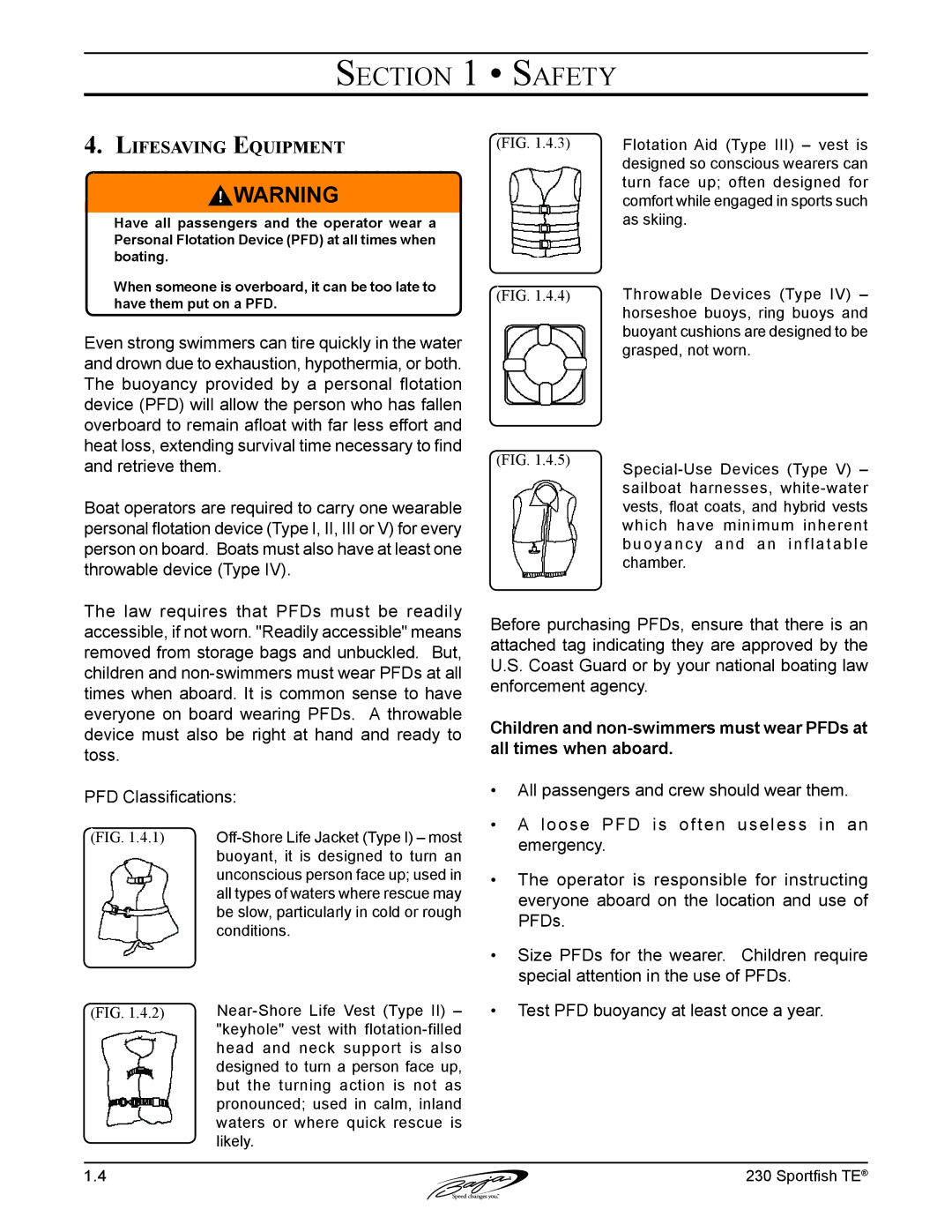230 specifications
The Baja Marine 230 is a striking example of performance and style in the realm of high-performance boats. Renowned for its sleek design and aggressive aesthetic, this vessel is engineered for enthusiasts who crave exhilarating speed, agile handling, and a thrilling boating experience.One of the standout features of the Baja Marine 230 is its impressive powertrain, which typically includes potent engine options that deliver remarkable horsepower. With a standard engine often exceeding 300 horsepower, it can achieve impressive top speeds that delight both novice and seasoned boaters. The boat's shape is meticulously crafted to reduce drag and enhance performance, ensuring that every dash across the water is thrilling.
The hull design of the Baja 230 is a notable characteristic, featuring a deep-V configuration that allows for excellent stability and a smooth ride even in choppy waters. This design minimizes the impact of waves, giving passengers a comfortable experience during high-speed cruising. Additionally, it is built to handle sharp turns and rapid accelerations, putting control firmly in the hands of the captain.
In terms of technology, the Baja Marine 230 often includes advanced instrumentation, with easy-to-read gauges and digital displays that provide real-time data on speed, fuel levels, and engine performance. This modern cockpit design not only enhances usability but also introduces an element of sophistication to the overall boating experience.
Comfort and luxury are not neglected in the Baja Marine 230. The cockpit typically features plush, ergonomically designed seating, accommodating guests while still leaving room for movement. Many models also come equipped with amenities such as high-quality sound systems, customizable lighting, and plenty of storage options, making it ideal for day trips and longer excursions alike.
Safety is paramount, and the Baja Marine 230 is built with sturdy construction materials that ensure durability and reliability on the water. Features such as non-slip surfaces, handrails, and well-placed grab handles contribute to a safe boating experience for all onboard.
Overall, the Baja Marine 230 stands out as a premium choice for fans of performance boating. Its combination of power, design, technology, and comfort makes it a formidable presence on the water, ready to deliver unforgettable adventures for those who dare to take command.

